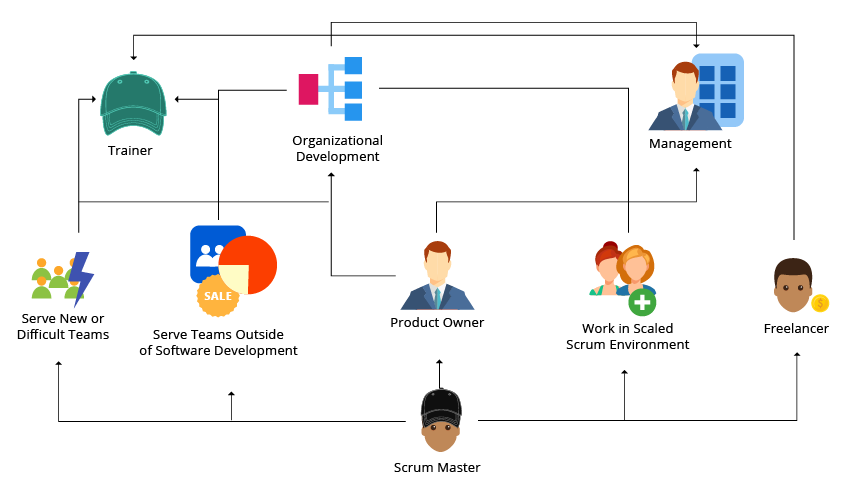Introduction
In today’s fast-changing tech world, some roles have become super important, and one of these is being a Scrum Master. As businesses adopt agile methods to manage projects better, Scrum Masters have become key players. This article will show you the journey of a Scrum Master’s career, the skills you need at different stages, and tips to do well in this exciting field.
The Job of a Scrum Master
A Scrum Master takes care of the Scrum framework, which is a set of rules to help teams work together better. Their main job is to make sure the team follows these rules and overcomes any obstacles to do their best work.

1. Starting Out: Building the Basics
When you’re new to being a Scrum Master, focus on learning the basics. This means understanding what agile and Scrum are, and how they work. You’ll also need to be good at talking to people and helping them work together, as teamwork and talking are really important in this job.
At this stage, getting a certification like Certified ScrumMaster (CSM) or Professional Scrum Master (PSM) can show that you know the basics and are serious about your new role.
2. Getting Better: Making Things Run Smoothly
As you get more experience, you’ll start helping the team work even better. You’ll guide them to find ways to improve their work and solve problems faster. Think of yourself as a helper-leader who supports the team and makes sure they have what they need to succeed.
In this part of your career, work on being a good helper and solving problems when people in the team don’t agree. Also, learn about other ways of working that are like Scrum, such as Kanban and Lean.
3. Becoming an Expert: Coaching Others
With time, you’ll become a coach. This means you’ll not just help your team, but you’ll also teach other Scrum Masters and the people in charge. You’ll help them understand how to use agile methods in bigger ways across the company.
At this point, you’ll need to be a really good listener and ask smart questions. You’ll guide people to figure things out on their own. You might also want to get fancier certifications like Certified Scrum Professional (CSP) or ICAgile Certified Professional in Agile Coaching (ICP-ACC).
4. Making a Big Difference: Changing the Whole Company
When you’re a pro, you’ll work on even bigger stuff. You’ll talk to bosses and important people in the company to make agile methods part of how the whole company does things. You’ll help them see how agile can make the company better.
To do well here, work on being good at planning and helping people accept big changes. You’ll need to show how agile can help the company grow and do better.
Conclusion
Being a Scrum Master is a journey that keeps on going. From learning the basics to making big changes in the company, each step is important. Keep learning and growing, focus on how you work with people, and be ready to change as the tech world does. Whether you’re starting or moving up, being a Scrum Master lets you be a part of the exciting world of agile project management.









